Have you ever thought about how much your windows do for your home? They let in natural light, offer beautiful views, and keep the elements at bay.
But, just like any part of your house, they need a little TLC to stay in top shape. If you’re wondering how to maintain windows effectively, you’re in the right place.
In this post, we’ll share 15 essential tips on how to maintain your windows, all designed to be easy for you to do on your own. Whether you’re a DIY enthusiast or just looking for simple ways to keep your home in great condition, these tips will help you extend the life and performance of your windows.
Want to ensure your windows stay beautiful and functional for years to come? Reach out now to learn how our professional window maintenance services can make a difference for your home.
1. Regular Cleaning

Cleaning your windows regularly is essential for maintaining their appearance and functionality. Use a soft microfiber cloth, a mild soap solution, and water to clean the glass. Avoid harsh chemicals that can damage the window’s surface.
Make it a habit to clean your windows at least twice a year, or more frequently if you live in a dusty area. Clean the window frames and sills as well, removing any dust or dirt buildup. This helps prevent wear and tear and keeps your windows looking their best.
Here’s a list of what you’ll need for regular window cleaning:
-
-
- Soft microfiber cloths or sponges
- A squeegee
- A bucket
- Mild dish soap or a commercial window cleaner
- Water
- A ladder (for hard-to-reach windows)
- Newspapers or lint-free towels (for drying)
-
Start by removing any dust or loose dirt from the window with a dry cloth to prevent scratches. Mix a few drops of mild dish soap or window cleaner in a bucket for your cleaning solution.
Gently scrub the window with a soft cloth or sponge, focusing on the edges and corners. Rinse off the cleaning solution with a cloth soaked in plain water to remove any residue.
Finally, use a squeegee to remove excess water, and dry the glass with newspapers or lint-free towels for a streak-free finish.
2. Inspect for Damage

Regularly inspect your windows for any signs of damage, such as cracks, chips, or gaps. Pay special attention to the edges and corners of the glass and frame. Use a flashlight to help spot any small imperfections.
If you find any damage, address it promptly. Small issues can quickly become larger problems if left unattended. Fixing minor damage early can save you money on costly repairs down the line and maintain your window’s efficiency.
However, if the damage is extensive, it might be time to consider new windows for your home. New windows can offer improved energy efficiency, better security, and enhanced curb appeal, making them a worthwhile investment for your home.
3. Seal Gaps and Leaks
Sealing gaps and leaks in your windows is crucial for preventing drafts and maintaining energy efficiency. Look for visible gaps around the window frames and feel for any drafts on windy days.
Use silicone caulk or weatherstripping to seal any gaps. Applying the sealant properly ensures a tight fit and long-lasting protection. This simple task can significantly reduce your energy bills and improve the comfort of your home.
Types of Sealants to Use
Choosing the right sealant is important for a durable and effective seal. Here are a few common types:
-
-
- Silicone Caulk: Ideal for non-porous surfaces like glass and metal, flexible, and waterproof.
- Acrylic Latex Caulk: Easy to apply, paintable, and good for wood and other porous materials.
- Polyurethane Caulk: Strong adhesion and durability, perfect for exterior windows exposed to the elements.
-
4. Lubricate Moving Parts
Lubricating the moving parts of your windows, such as tracks and hinges, ensures smooth operation and extends their lifespan. Dirt and grime can cause these parts to stick and wear out over time.
Use silicone spray or dry Teflon spray for best results. Apply the lubricant to the tracks and hinges, then open and close the window a few times to distribute it evenly. Regular lubrication prevents wear and keeps your windows operating smoothly.
How to Apply Lubricant
-
-
- Clean the Tracks and Hinges: Remove dirt and debris with a vacuum or brush.
- Apply the Lubricant: Shake the can well, spray a light, even coat.
- Operate the Window: Open and close the window several times to spread the lubricant.
- Wipe Away Excess: Use a clean cloth to remove any excess lubricant.
-
5. Repaint and Refinish Frames
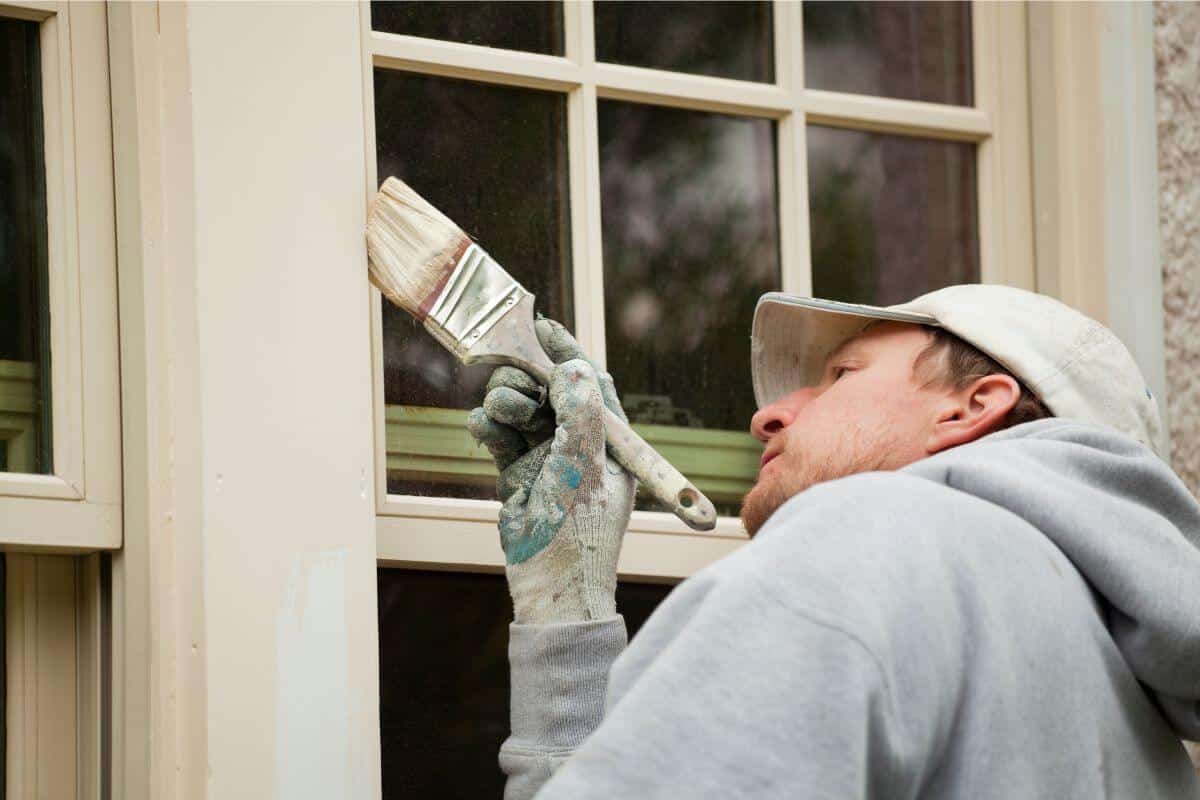
Repainting or refinishing your window frames can protect them from the elements and enhance their appearance. If the paint is peeling, cracking, or fading, it’s time for a refresh.
Start by sanding the frames to remove old paint and create a smooth surface. Apply a primer, followed by a high-quality exterior paint. Multiple thin coats provide a durable finish. This process not only protects your frames but also boosts your home’s curb appeal.
Steps for Sanding and Painting
-
-
- Preparation: Remove hardware and cover the glass with painter’s tape.
- Cleaning: Clean frames thoroughly and let dry.
- Sanding: Use medium-grit sandpaper to smooth the surface.
- Priming: Apply primer and let it dry.
- Painting: Apply multiple thin coats of exterior paint, letting each coat dry completely.
-
Not exactly good at DIY painting? Professional contractors can help! Read our related article: How to Find a Good House Painter in Your Area
6. Replace Worn Weatherstripping
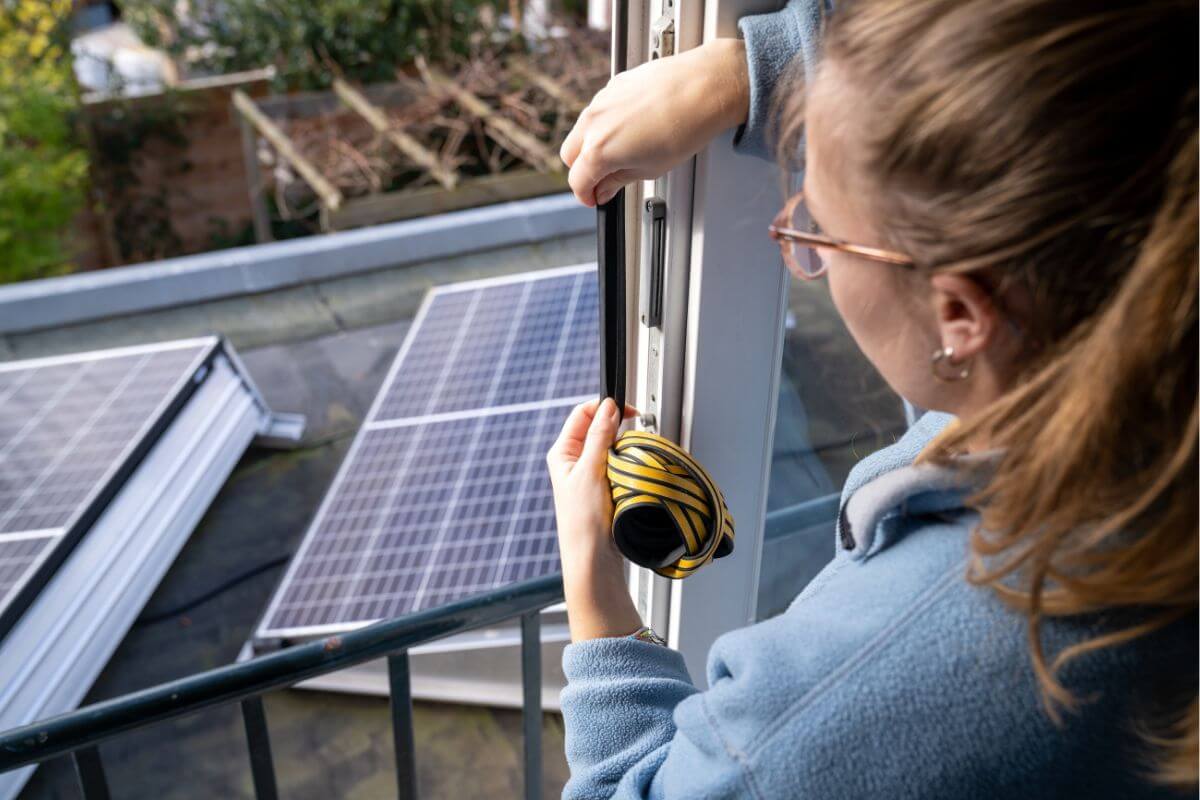
Worn weatherstripping can lead to drafts and higher energy bills. Inspect your weatherstripping for cracks, tears, or compression. Replacing it can make a big difference in your home’s comfort and efficiency.
Types of Weatherstripping Materials
-
-
- Adhesive-Backed Foam Tape: Easy to apply, great for irregular gaps.
- V-Seal or V-Strip: Durable, effective for double-hung or sliding windows.
- Felt: Affordable, easy to install, but less durable.
- Rubber or Vinyl: Strong seal, highly durable.
- Metal Strips: Long-lasting, best for casement windows.
-
Replacement Process
-
-
- Remove Old Weatherstripping: Use a putty knife or scraper.
- Clean the Surface: Ensure the area is clean and dry.
- Measure and Cut: Cut the new weatherstripping to the appropriate length.
- Apply the New Weatherstripping: Press firmly in place or follow specific installation instructions.
- Check the Seal: Ensure there are no gaps or loose areas.
-
7. Clean and Maintain Screens
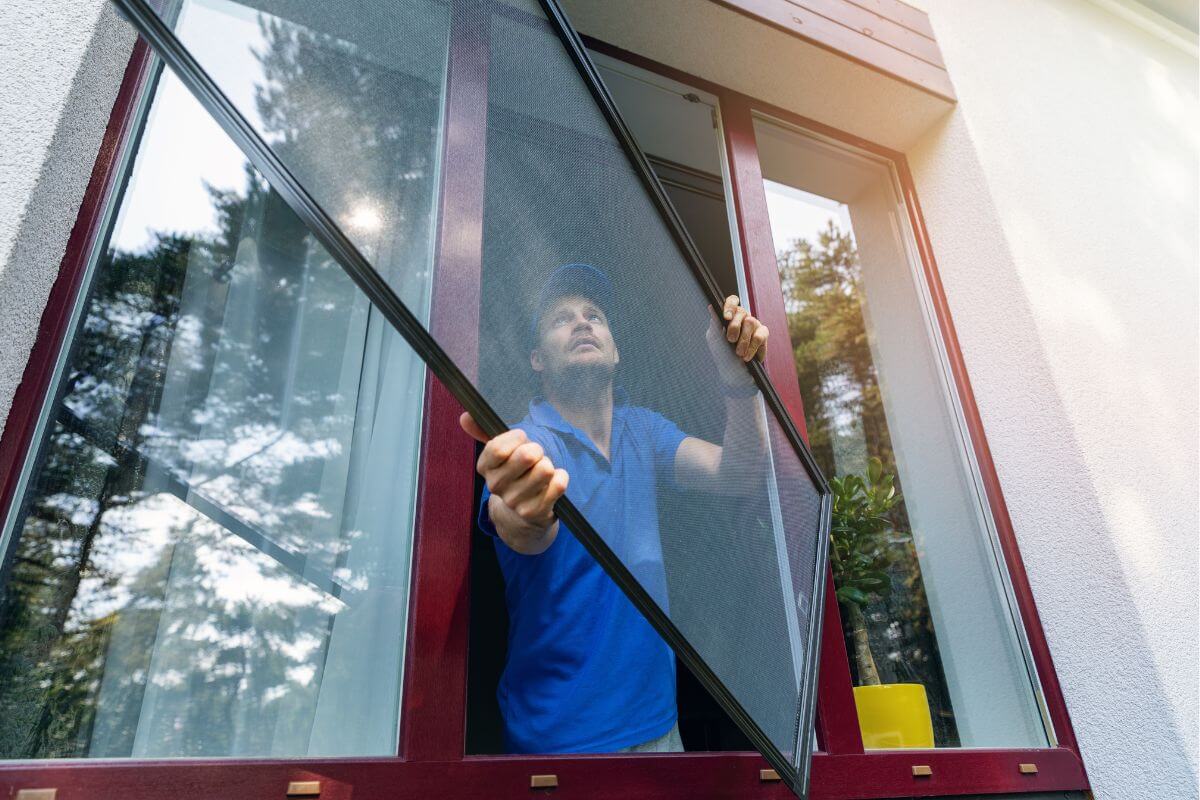
Window screens protect against insects and debris, but they can get dirty and clogged over time. Regular cleaning keeps them functional and looking good.
Remove the screens and gently wash them with soapy water and a soft brush. Rinse thoroughly and let them dry before reinstalling. Inspect for any holes or damage, and repair or replace as necessary to maintain proper protection.
8. Check Locks and Latches
Ensuring that your window locks and latches are in good working order is important for security and functionality. Test each lock and latch to make sure they operate smoothly and securely.
If you find any issues, tighten loose screws or replace damaged parts. Well-maintained locks and latches help keep your home safe and your windows easy to use.
9. Maintain Window Caulking
Caulking around your windows prevents drafts and moisture from entering your home. Inspect the caulking regularly for cracks or gaps.
Remove any damaged caulk and apply a fresh bead of silicone caulk around the edges of the window. Smooth it out with a caulking tool or your finger for a neat finish. Proper caulking enhances insulation and protects your home from water damage.
10. Control Condensation
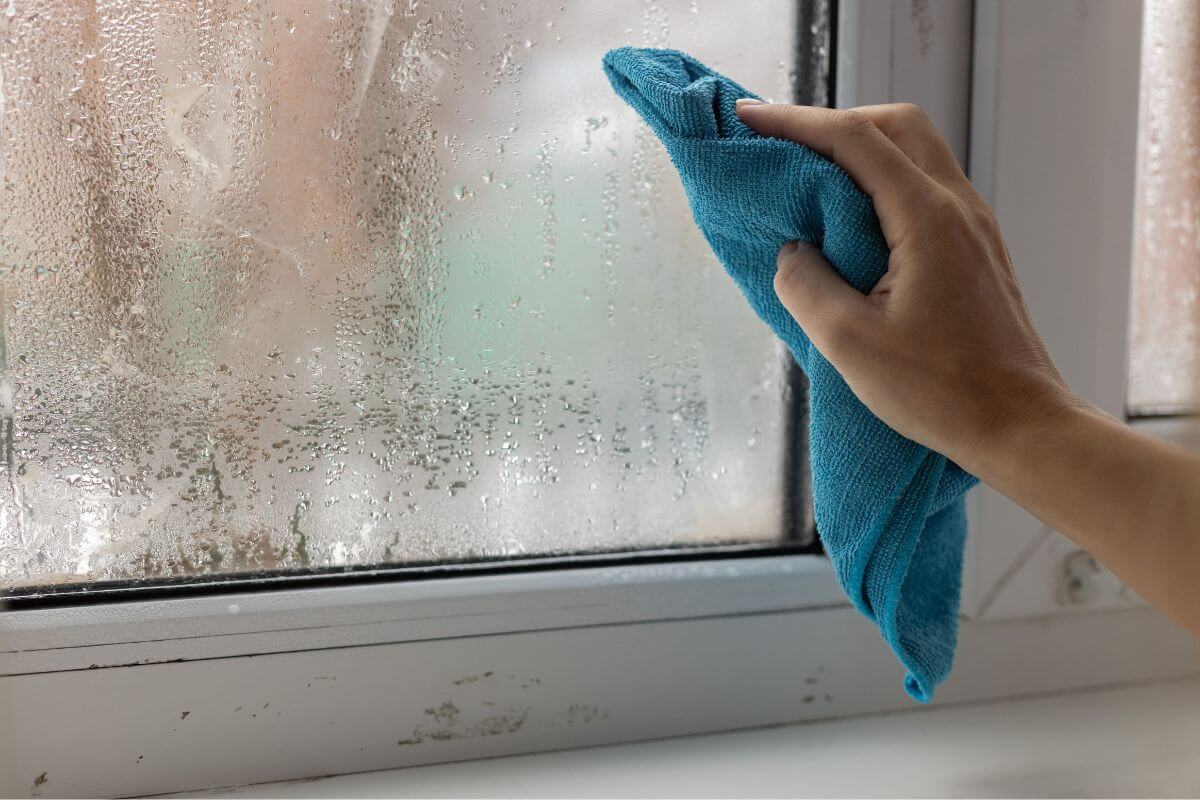
Condensation on your windows can lead to mold and damage. To control condensation, ensure good ventilation in your home, especially in high-humidity areas like kitchens and bathrooms.
Using a dehumidifier can help reduce moisture levels. Additionally, keeping your windows clean and free of obstructions allows for better airflow and reduces the likelihood of condensation forming.
11. Protect Windows from the Elements
Protecting your windows from harsh weather conditions can extend their lifespan. Use window film or coverings to shield against UV rays and extreme temperatures.
Consider installing storm windows or shutters for additional protection during severe weather. Regularly cleaning and maintaining your windows also helps them withstand the elements better.
12. Upgrade to Energy-Efficient Windows
Upgrading to energy-efficient windows can significantly reduce your energy bills and improve your home’s comfort. Look for windows with low-E glass, double or triple glazing, and proper insulation.
Energy-efficient windows can be a worthwhile investment, offering long-term savings and environmental benefits. Consult with a professional to determine the best custom windows options for your home.
13. Use Window Treatments
Window treatments, such as curtains, blinds, and shades, can enhance the appearance of your windows and provide additional insulation. Choose treatments that suit your style and functional needs.
Properly installed window treatments help control light, privacy, and temperature. They can also protect your windows and furniture from UV damage.
Benefits of Window Treatments
-
-
- Insulation: Helps regulate indoor temperature.
- Privacy: Provides added privacy for your home.
- UV Protection: Shields windows and furnishings from UV rays.
- Aesthetics: Enhances the overall look of your home.
-
14. Regular Professional Inspections
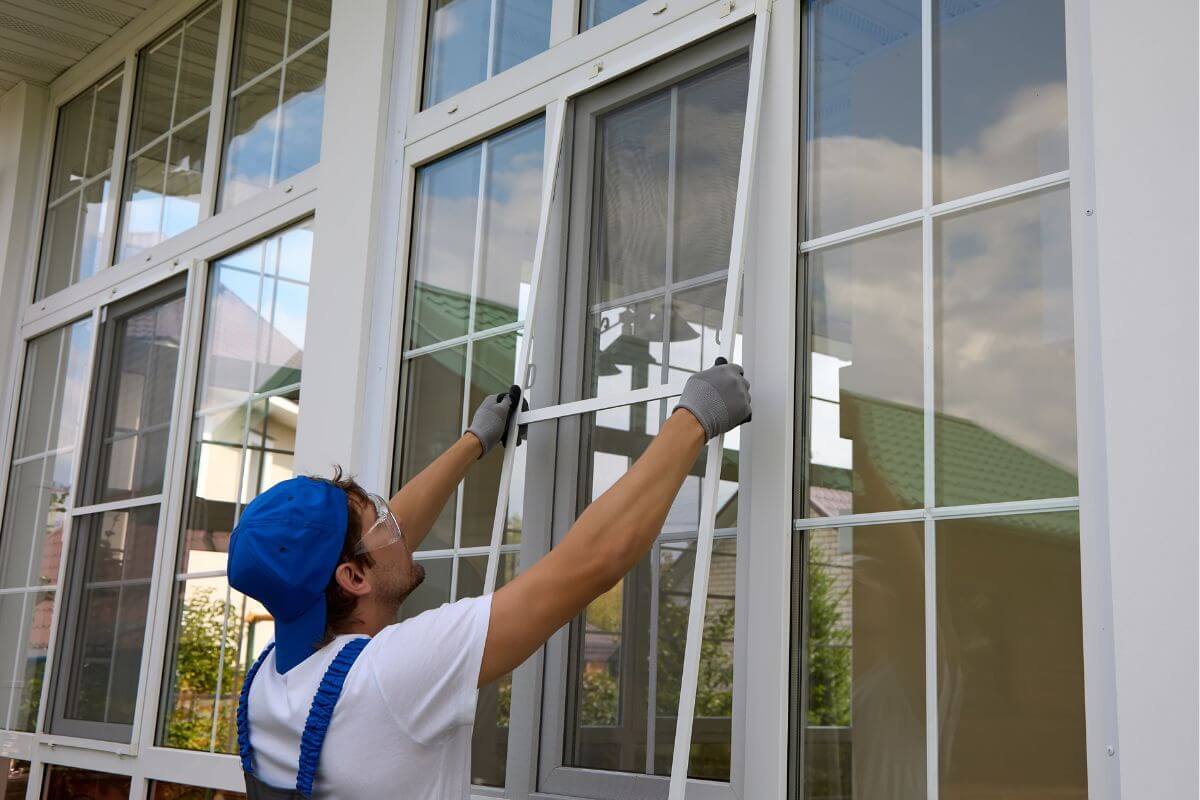
Having your windows professionally inspected can identify potential issues before they become major problems. A professional can spot things you might miss and provide expert advice on maintenance and repairs.
Schedule an inspection every few years or if you notice any persistent issues with your windows. Professional maintenance ensures your windows remain in top condition.
What to Expect from a Professional Inspection
-
-
- Thorough Check: Detailed examination of frames, glass, and seals.
- Maintenance Tips: Expert advice on how to maintain your windows.
- Early Detection: Identifying issues before they become costly repairs.
-
15. Seasonal Maintenance Tips
Different seasons bring different challenges for your windows. In the spring and fall, clean your windows and inspect for any damage from winter or summer weather.
In the winter, check for drafts and ensure your weatherstripping and caulking are intact. In the summer, protect your windows from intense sun and heat with appropriate treatments and coverings. Regular seasonal maintenance keeps your windows performing well year-round.
Seasonal Checklist
-
-
- Spring: Clean windows, check for winter damage.
- Summer: Install UV protection, ensure proper ventilation.
- Fall: Clean windows, inspect for summer damage, apply weatherstripping.
- Winter: Check for drafts, ensure caulking is intact, use window insulation kits if needed.
-
Keep Your Windows in Top Shape with Professional Window Maintenance
Maintaining your windows is crucial for keeping your home comfortable, energy-efficient, and looking its best. By following these 15 essential tips, you can ensure your windows remain in top condition year-round.
Need more assistance with your window repairs and maintenance? At Perimeter Remodeling, we specialize in providing expert care and maintenance for all types of windows. Our team is dedicated to helping you enhance the comfort, energy efficiency, and beauty of your home.
Whether you need professional inspections, repairs, or advice on upgrading to energy-efficient windows, we’ve got you covered. Don’t let window issues compromise your home’s performance.
Schedule your free consultation today and discover how our expertise can make a difference. Keep your windows in perfect shape and enjoy the benefits of a well-maintained home!



Recent Comments